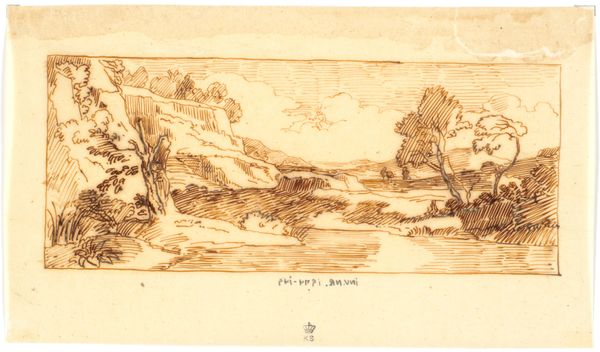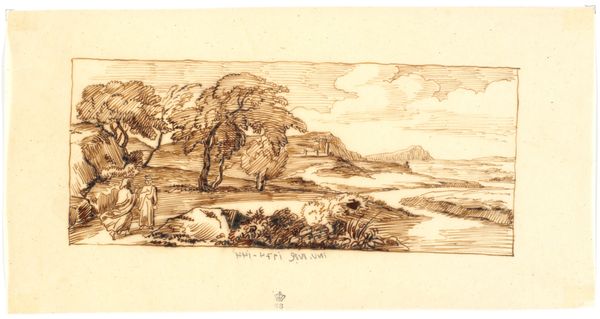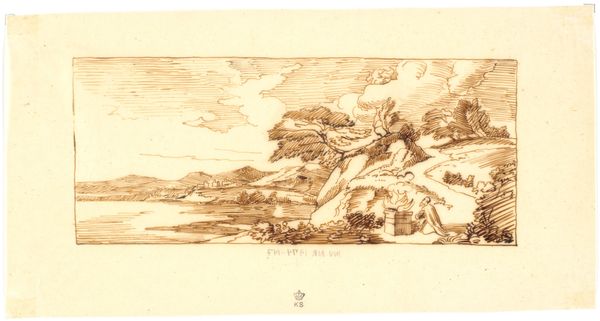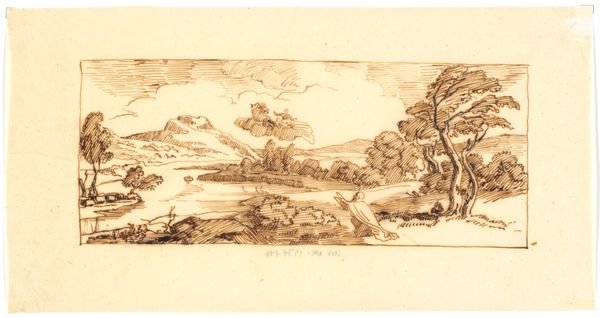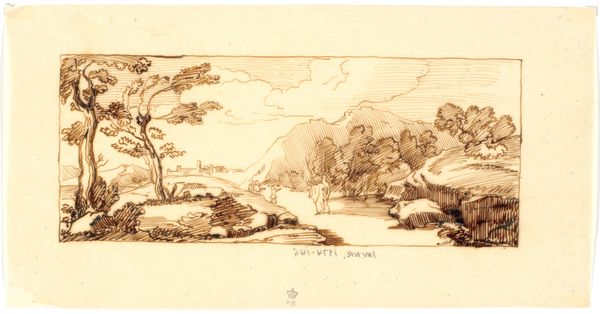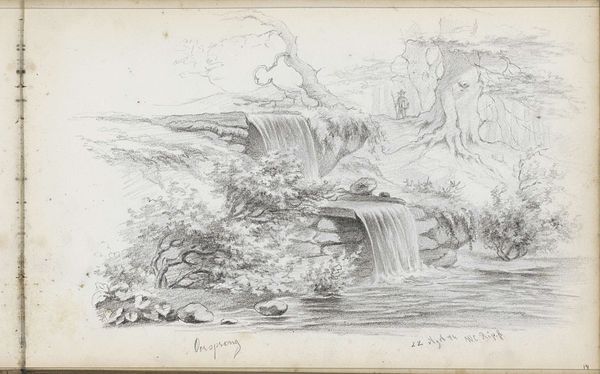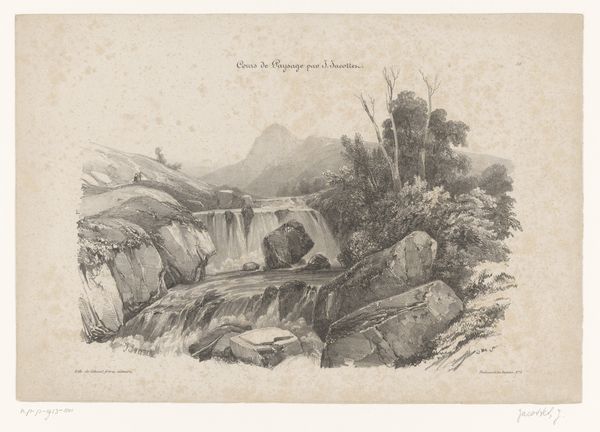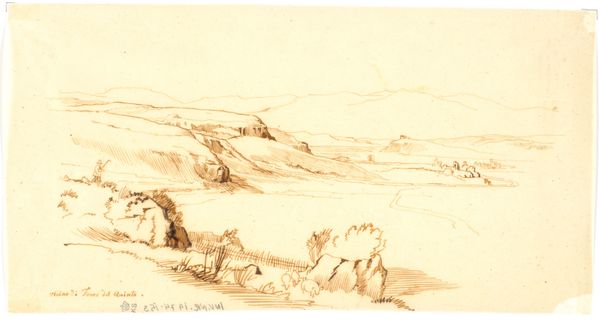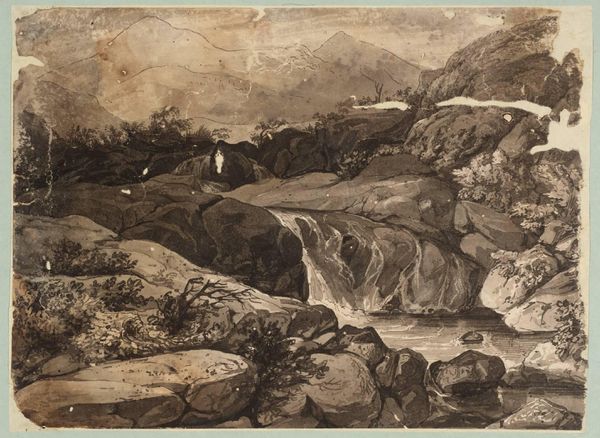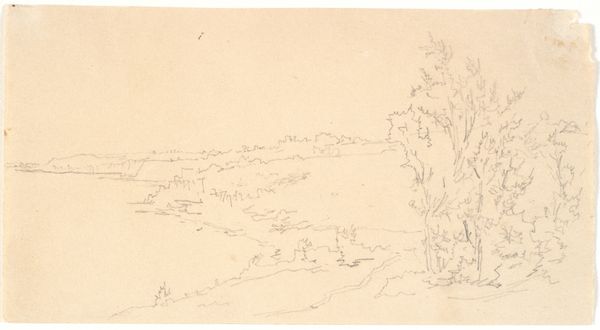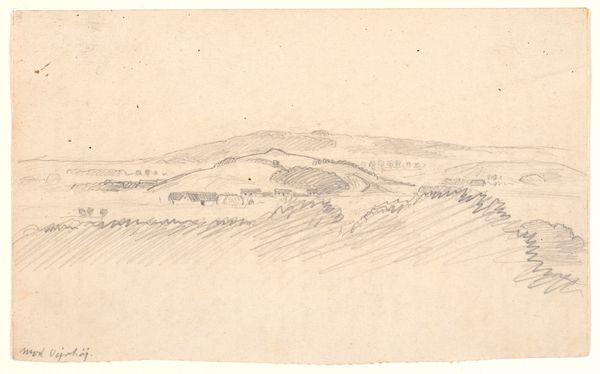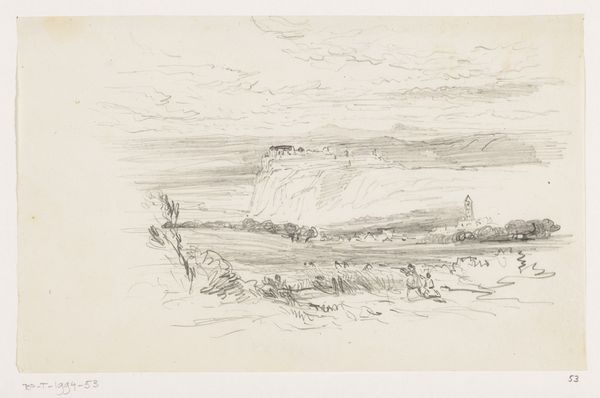
drawing, ink
#
drawing
#
landscape
#
ink
#
romanticism
Dimensions: 116 mm (height) x 188 mm (width) (bladmaal)
Curator: Looking at “Landskab,” dating from somewhere between 1803 and 1848, crafted with ink on paper by Martinus Rørbye, one can't help but feel drawn into its meticulous details. Editor: My initial reaction is one of quiet reverence; there's an understated, almost melancholy feel to it. The monochromatic palette enhances this introspective mood. I can almost hear the water cascading down those meticulously drawn falls. Curator: The choice of ink as a medium highlights the availability and affordability of materials for artists during this period. The act of drawing itself – the labor involved in creating these precise lines – becomes central to understanding its artistic value, it's not just a sketch but a testament to production itself. Editor: Exactly, and situated within its historical context, Rørbye's landscape embodies the Romantic era's fascination with nature's sublime power, though filtered through a decidedly Danish sensibility. Considering the social and political upheavals of the time, I see this piece as possibly offering a counter-narrative, a retreat into an idealized version of nature. Curator: It's fascinating to think about the types of ink available. Iron gall ink was common, and its acidity affects preservation. Considering this also influences how the artwork will degrade and age over time, so the degradation itself also offers historical and material clues. Editor: The representation of nature here speaks volumes about prevailing attitudes towards landscape and its relationship with national identity. Who had access to landscapes like these? And how did their representation in art influence those power dynamics? Curator: Let's not overlook how drawings functioned within the studio practices of the time. They served not just as ends in themselves but often as preparatory sketches for larger paintings. Editor: Precisely, and thinking about how this scene aligns with or diverges from dominant social or political narratives is essential to understanding its complexity. Does this romanticised landscape ignore some important societal realities? How does it function ideologically? Curator: Well, as a materialist I like to view it from a material standpoint. Ultimately, the legacy of artworks like "Landskab" isn’t solely about artistic genius or romantic ideals, it's as much about ink, paper, skill and work that makes its way through time to arrive for audiences like us. Editor: And ultimately as an activist, the beauty and the historical context must inform contemporary struggles in ways that are resonant with current realities. Thanks for making the time for these reflections.
Comments
No comments
Be the first to comment and join the conversation on the ultimate creative platform.
